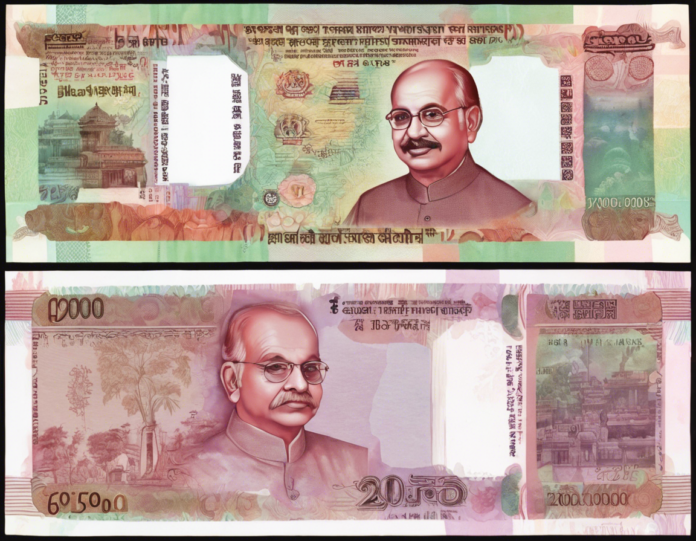In recent weeks, there has been a surge of rumors and speculations circulating around the 2000 Ka Note in India. This high-denomination note, introduced after the demonetization drive in 2016, has been under scrutiny due to various reasons. In this article, we will delve into the latest updates, controversies, and implications surrounding the 2000 Ka Note.
History of the 2000 Ka Note
The 2000 Rupee note was introduced by the Reserve Bank of India as part of the demonetization move in November 2016. The goal was to curb black money and counterfeit currency in circulation. The unique purple color and the denomination of 2000 were aimed at facilitating high-value transactions and reducing the number of notes one needed to carry.
Current Status
While the 2000 Ka Note is still legal tender in India, there have been reports suggesting its possible discontinuation. The circulation of this note has reduced significantly over the years, with many businesses and individuals showing a preference for smaller denominations. The Reserve Bank of India, however, has not made any official announcements regarding the discontinuation of the 2000 Rupee note.
Reasons for the Decline in Circulation
Several factors have contributed to the decline in the usage of the 2000 Ka Note:
– Lack of Acceptance: Many small businesses and vendors are hesitant to accept the 2000 Rupee note due to difficulties in providing change.
– Counterfeiting Concerns: The high denomination of the note has made it a target for counterfeiters, leading to mistrust among the public.
– Digital Payments: The rise of digital payment methods has made cash transactions, especially in high denominations, less common.
– Government’s Focus on Lower Denominations: The government has been promoting the use of lower denomination notes to boost financial inclusion and reduce the reliance on high-value currency.
Controversies Surrounding the 2000 Ka Note
The 2000 Rupee note has faced its fair share of controversies since its introduction:
– Hoarding of Cash: There were concerns that the high denomination note would encourage hoarding of black money.
– Limited ATM Dispensation: ATMs were configured to dispense larger notes, leading to a shortage of smaller denominations for everyday transactions.
– Lack of Security Features: Despite having advanced security features, there were reports of counterfeit 2000 Rupee notes in circulation.
Future Implications
The future of the 2000 Ka Note remains uncertain as digital payments gain traction and the government promotes a cashless economy. While the Reserve Bank of India has not announced any plans for the withdrawal of the note, its usage may continue to decline organically.
Closing Thoughts
In conclusion, the 2000 Rupee note has been a subject of debate since its inception. While it served a purpose during demonetization, its relevance in the current economic landscape is questionable. Whether the 2000 Ka Note will stand the test of time or fade into obscurity remains to be seen.
FAQs
- Is the 2000 Rupee note still legal tender?
-
Yes, the 2000 Ka Note is still legal tender in India.
-
Are there any plans to discontinue the 2000 Rupee note?
-
The Reserve Bank of India has not announced any plans for the discontinuation of the 2000 Ka Note.
-
Why is the circulation of the 2000 Rupee note declining?
-
Factors such as lack of acceptance, counterfeiting concerns, digital payments, and government policies have contributed to the decline in circulation.
-
What security features does the 2000 Rupee note have?
-
The 2000 Rupee note is equipped with security features such as microprinting, security threads, color-shifting ink, and more.
-
Can I exchange my 2000 Rupee notes for smaller denominations at banks?
-
Yes, you can exchange your 2000 Rupee notes for smaller denominations at banks, subject to availability.
-
Are there any restrictions on the use of the 2000 Rupee note for transactions?
-
There are no specific restrictions on using the 2000 Ka Note for transactions, but it may be challenging to find businesses willing to accept it due to the high denomination.
-
What is the current sentiment regarding the 2000 Rupee note among the public?
-
The sentiment regarding the 2000 Rupee note varies among the public, with some still using it for convenience, while others prefer smaller denominations.
-
How does the government view the use of high denomination notes like the 2000 Rupee note?
-
The government has been promoting the use of lower denomination notes to encourage digital transactions and discourage the hoarding of black money.
-
Have there been any official statements regarding the future of the 2000 Ka Note?
-
As of now, there have been no official statements from the Reserve Bank of India regarding the future of the 2000 Rupee note.
-
What impact has demonetization had on the usage of high denomination notes like the 2000 Rupee note?
- Demonetization had a significant impact on the circulation and usage of high denomination notes, including the 2000 Ka Note, as the move aimed to curb black money and promote transparency in financial transactions.












